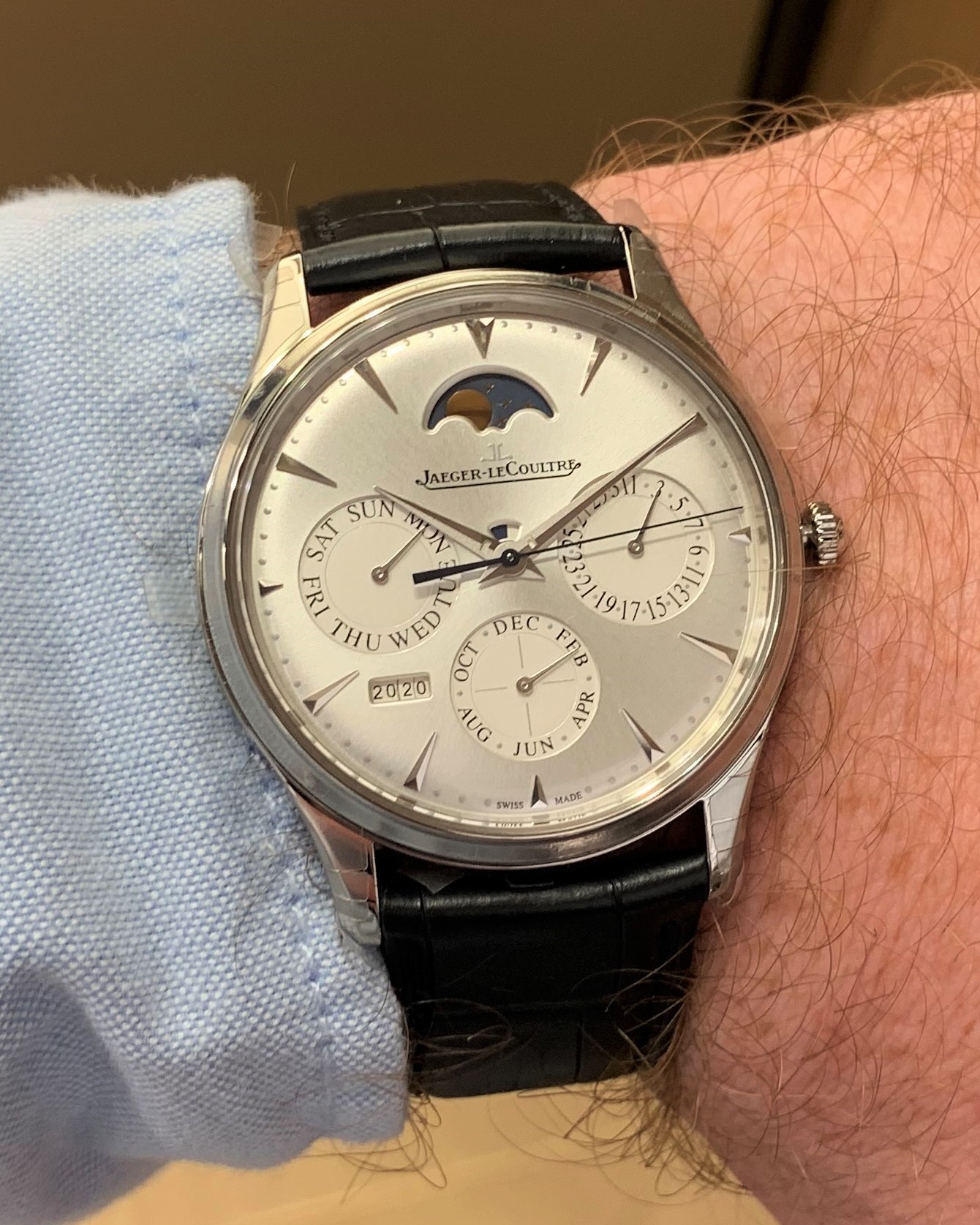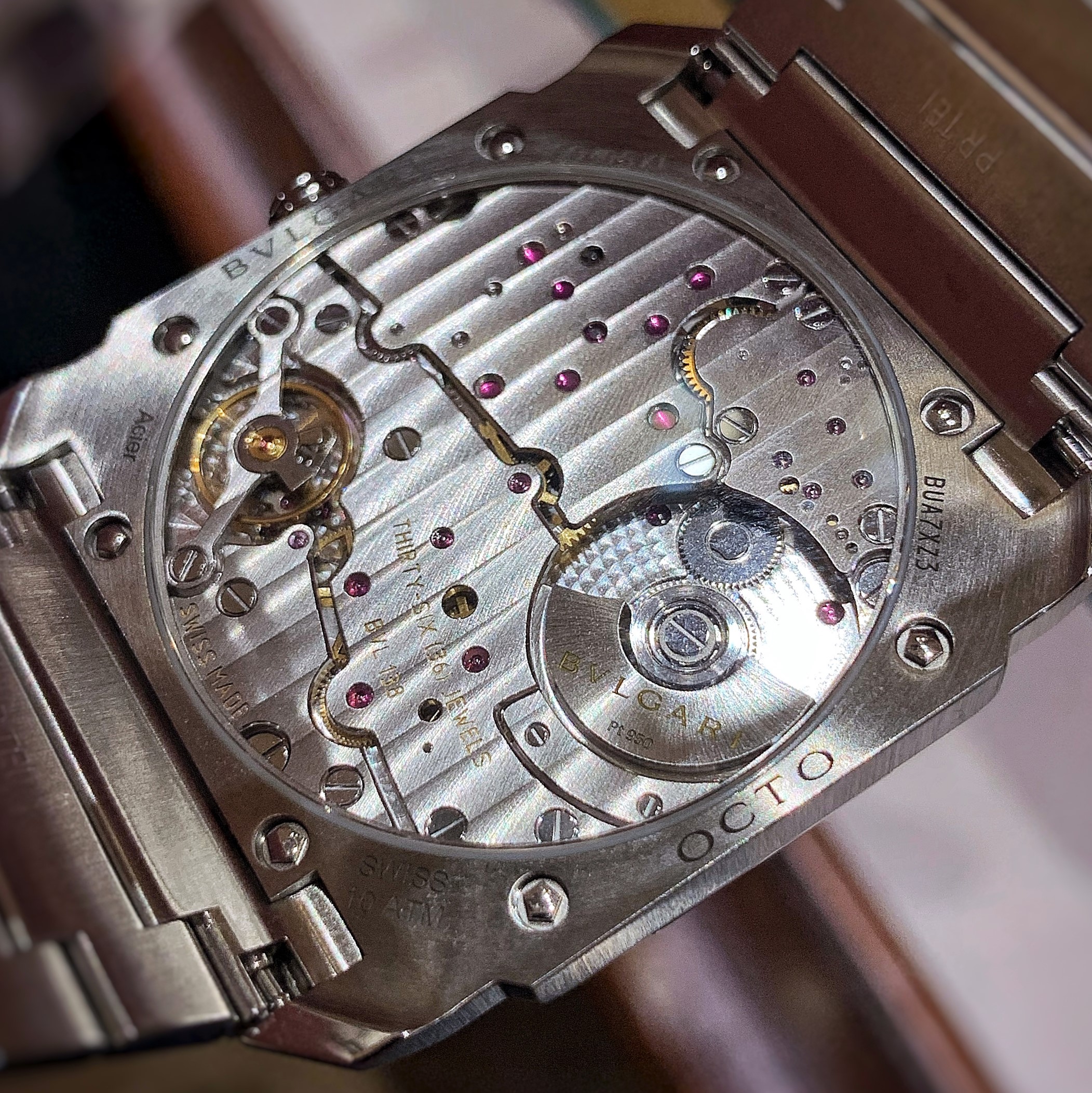The pursuit of thin and ultra-thin watchmaking is not a new thing. It is, however, perhaps more prominent today thanks to the seemingly continual tug-of-war between houses such as Piaget and Bulgari, who have produced numerous world record ultra-thin timepieces, particularly in the past decade. In this article, we will take a look at the historical pursuit of ultra-thin watches and explore some contemporary achievements.
In Pursuit of Ultra-thin Watchmaking
Innovations and advances in technology and engineering are intrinsically linked to the idea of doing things better, or perhaps more efficiently. Often, this is quite relatable to making things smaller, lighter, thinner. Some obvious examples are the personal computer which has shrunk incomprehensibly smaller than the first computers; motor sport and motor racing searching perpetually for marginal gains in saving weight to improve times by mere fractions of a second; television screens becoming thinner and lighter and yet the screen itself larger.
I have said before that in my personal opinion, mechanical watchmaking is perhaps the most perfect blend of tradition, precision engineering, and art.
To this end, it comes as no surprise that we can trace the pursuit of ultra-thin watchmaking back as far as the 1700s; Jean-Antoine Lépine (1720-1814) was a French clockmaker who in around 1770 created the Lépine calibre, which incorporated all moving parts of a timepiece onto independent bridges on a single disc, and replaced the fusee and chain components with a cylinder escapement. This innovative approach broke with centuries of tradition, allowing for timepieces to be made significantly thinner, and ultimately became a foundation for mechanical watchmaking which is still used today.
Another marquee moment can be seen at the turn of the Twentieth Century. In 1903, watchmaker Edmond Jaeger partnered with Jacques-David LeCoultre to create the Calibre LeCoultre 145 in 1907, a movement which was astonishingly only 1.38mm thick – thinner than two credit cards! Of course, this partnership continued, flourishing into the manufacture known today as the watchmaker’s watchmaker, Jaeger-LeCoultre. Even today, Jaeger-LeCoultre has a reputation for producing ultra-thin timepieces within their Master collection, including complications such as the perpetual calendar, a 9.2mm thick timepiece containing calibre 868/1, which itself measures just 4.72mm despite comprising 336 individual components.

Jaeger-LeCoultre Master Ultra-thin Perpetual, reference 130842J
Another manufacture who partook in ultra-thin watchmaking was the inimitable Audemars Piguet. Perhaps an early indication of the pursuit of ultra-thin watchmaking and the competitive side of this was in 1921, when Audemars Piguet responded to the Calibre LeCoultre 145 with their own pocket watch movement measuring 1.32mm thick – a mere 0.06mm thinner but thinner nonetheless!
It is worth noting that during this era, watches for gentlemen were generally designed with a simplistic aesthetic to be both elegant and discreet, true dress watches; the smaller (and thus thinner) the watch was, the easier it would be to slide unnoticed under the cuff of a shirt.
Audemars Piguet continued to develop ultra-thin movements for wristwatches, and in 1938 created their manual wind calibre 9ML, which was 1.64mm thick. They later collaborated with both Jaeger-LeCoultre and Vacheron Constantin to produce the calibre 2003, another manual wind movement of the same thickness, but designed to be more robust than its predecessor. Such was the success of this movement, it remained in production used by both Audemars Piguet and Vacheron Constantin until the early 2000s. Both manufacturers continue to offer ultra-thin timepieces in their collections today, too.
It was around this time that Piaget also entered the frame of crafting ultra-thin watches, leveraging their history in making components to develop into somewhat of a specialist in the field. In 1957, Piaget launched their calibre 9P, a manual-wind wristwatch movement measuring only 2mm thick before releasing the automatic calibre 12P. The 12P incorporated the then recently developed micro-rotor, the concept of which can be traced to 1958, marking the result of independent developments by both Buren Watch Company and Universal Geneve. The Piaget manufacture was also pioneering in developing the micro-rotor, and when calibre 12P was launched at the Basel Fair in 1960, it was hailed the world’s thinnest automatic movement at only 2.3mm thick.
Another lesser-known pioneer of ultra-thin watchmaking was Jean Lassale, who presented his 1.2mm manual-wind calibre 1200, and 2.08mm automatic calibre 2000 at the Basel Fair in 1976. These used ball bearings to guide movement components and did not include any bridges other than for the balance wheel and pallet. Despite this innovative approach, Lassale was unable to solve two significant issues – the first being that if the watch was strapped on tightly, the crystal could be snapped, and secondly that removing the caseback would damage the movement beyond repair, such that servicing was not possible without replacing the entire movement.
By the late 1970s, the invention of quartz movements made the pursuit of ultra-thin watches a lot less challenging, introducing for the first time a family of movements which do not require a multitude of moving parts, replacing these with a battery. Fewer parts of course required less space, and so creating a thin timepiece became cheaper and easier than ever before.
Thankfully, the revival of mechanical watchmaking in the 1990s restored a perhaps somewhat dormant appreciation of the tradition which so eloquently fuses both art and engineering.
The modern world of horology has changed a lot, even just since the turn of the millennium, with new ideas and trends both coming and going, the rise in interest of vintage watches and of course independent watchmaking. Perhaps, then, it is not such a surprise that we can see a return of focus to high-end ultra-thin watchmaking as both an exhibition of horological savoir-faire as well as sating the modern-day yearning for the vintage designs of yesteryear.

Piaget Altiplano G0A43121

The watch itself is just 4.3mm thick
Whilst there are a multitude of manufacturers who continue to offer thin and ultra-thin watches, there are two undisputed masters of this craft who, in the past ten years, have racked up a frankly astonishing amount of records between them in demonstrating their absolute mastery of ultra-thin watchmaking and high-horology complications – these manufacturers are Piaget, and relative newcomer to high horology, Bulgari. Let’s take a look at some of the recent world records that they have set (for some relative context, a £1 coin is 2.8mm thick):
World Records for Thinnest Watch Movements
2010 Piaget World’s Thinnest Automatic Movement (calibre 1208P, 2.35mm)
2017 Bulgari World’s Thinnest Automatic Movement (calibre BVL 138, 2.23mm)

Bulgari BVL 138 automatic calibre with micro-rotor
World Records for Thinnest Watches
2010 Piaget World’s Thinnest Automatic Watch (the Altiplano 1208P, calibre 1208P, 5.25mm including case)
2013 Piaget World’s Thinnest Minute Repeater (Emperador Coussin Ultra-thin Minute Repeater, 1290P movement, 9.4mm including case)
2014 Piaget World’s Thinnest Mechanical Watch (the Altiplano 900P, calibre 900P, 3.65mm including case)
2014 Bulgari World’s Thinnest Tourbillon Watch (the Octo Finissimo Tourbillon, calibre Finissimo Tourbillon, 5mm including case)
2016 Bulgari World’s Thinnest Minute Repeater (Octo Finissimo Minute Repeater, calibre BVL 362, 6.85mm including case)
2017 Bulgari World’s Thinnest Automatic Watch (Octo Finissimo, calibre BVL 138, 5.15mm including case)
2018 Piaget World’s Thinnest Automatic Watch (Altiplano Ultimate Automatic 910P, calibre 910P, 4.3mm including case)
2018 Piaget World’s Thinnest Mechanical Watch (Altiplano Ultimate Concept, calibre 900P-UC, 2mm including case – concept only)
2018 Bulgari World’s Thinnest Automatic Tourbillon Watch (Octo Finissimo Tourbillon, calibre BVL 288, 3.95mm including case)
2019 Bulgari World’s Thinnest Automatic Chronograph (Octo Finissimo Chronograph GMT, calibre BVL 318, 6.9mm including case)
2020 Piaget World’s Thinnest Mechanical Watch (Altiplano Ultimate Concept, calibre 900P-UC, 2mm including case – now available for purchase)
2020 Bulgari World’s Thinnest Watch to combine skeleton automatic movement, single pusher chronograph and tourbillon (Octo Finissimo Tourbillon Chronograph Automatic, calibre BVL 388, 7.4mm including case)
Whilst I am almost certain I will have missed a record or two, you get the idea!

Bulgari Octo Finissimo Tourbillon


Bulgari Octo Finissimo Tourbillon Squellete - side profile

Bulgari Octo Finissimo Tourbillon Squellete dial
The micro-engineering required to continually advance the convergence of ultra-thin watchmaking and high-end complications is nothing short of astounding and includes every aspect of the watch to identify and exploit marginal gains. For automatic timepieces, research has gone into different types of rotors – most commonly either a micro-rotor which is easier to build into the main plate of a movement, or a peripheral rotor which surround the edge of the plate altogether.
For the case construction, the material is vitally important to ensure the timepiece is sufficiently strong – in the case of the Altiplano Ultimate Concept, this alone took 2 years. It is not always possible to exhibit the movement with an exhibition caseback as this compromises the strength of the case as well, which is already at a bare minimum by necessity. In order to fit the calibre components into the case, sometimes the case needs to be increased in diameter to introduce more room on a horizontal plane, counteracting the reduction of space imposed by thinner depth of both the calibre and case.
In Summary
The advances made in the past decade or so are phenomenal, and the relentless pursuit of continually creating thinner and thinner timepieces has no doubt posed a great many challenges to overcome. Suffice it to say that the friendly rivalry first seen between Jaeger-LeCoultre and Audemars Piguet in the 1930s has most certainly been surpassed with this modern-day tennis match of ultra-thin world record after ultra-thin world record; I cannot help but wonder what might be possible if the ingenuity of both Bulgari and Piaget came together as Audemars Piguet, Jaeger-LeCoultre and Vacheron Constantin did in the 1950s.
Finally, whilst it remains to be seen just how far micro-engineering and nano-technology can take ultra-thin watchmaking, it will certainly be exciting to see just what these incredible watchmakers are capable of.
If you have any questions, or want to share your thoughts, please get in touch via our Contact page, or via our Instagram.
You might also be interested in:
- “It’s complicated”: Manual-wind, automatic and quartz watch movement types
- “It’s complicated”: the Co-Axial escapement
- “It’s complicated”: Resonance in watchmaking
- Watch Stationery and Gift Ideas
- Watch Books, Watch Boxes and more at the Watch Affinity Shop on Amazon (commissions earned)
As an Amazon Associate, I earn from qualifying purchases – thank you for your support

